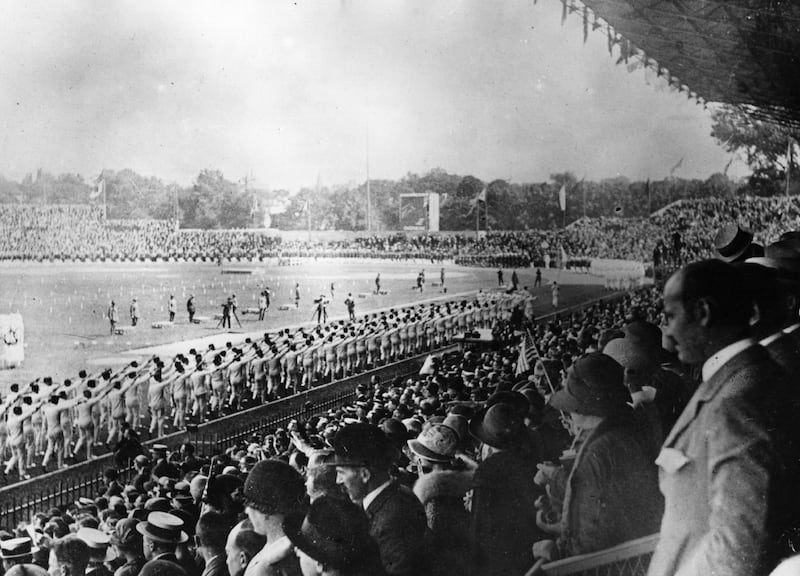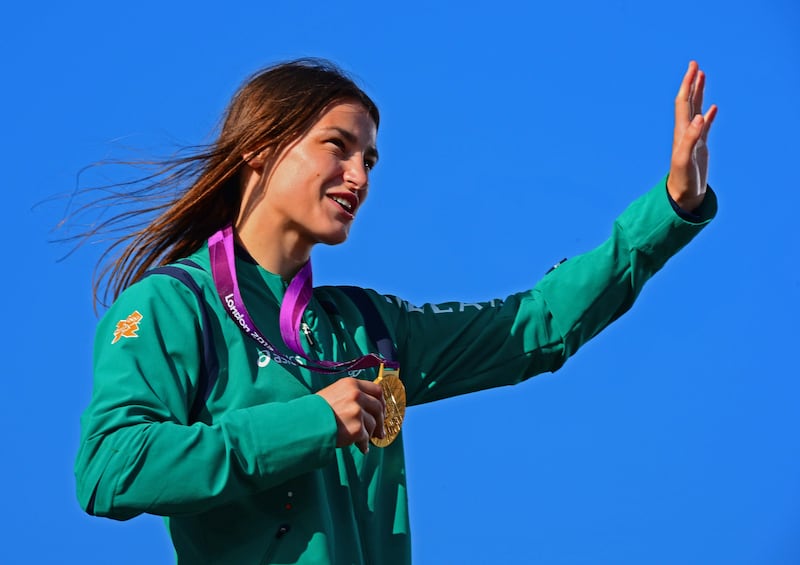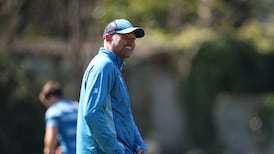It will come as no surprise to aesthetes that the only medals gained by Ireland at the 1924 Olympic Games were not won in sport. Jack Yeats took silver in Open Painting with his piece The Liffey Swim, which hangs in The National Gallery in Dublin, and the bronze medal went to Oliver St John Gogarty in Open Literature for his Ode to the Tailteann Games.
Doffing the cap to those medallists of almost 100 years ago, Irish athletes at the Paris 2024 Olympics next summer will stay in the Irish Cultural Centre near the Pantheon in the Latin Quarter once they are no longer involved in competing.
While the French founder of the modern Olympics, Baron Pierre de Coubertin, had high ideals about some things, such as men being educated in both mind and body and was a supporter of art as part of the early Games’ roster, his views on women were less classically enlightened.
The first modern Olympiad took place in Athens in 1896 and, just as in ancient Greece, women were barred from taking part, the founder believing “an Olympiad with females would be impractical, uninteresting, unesthetic and improper”.
Rieko Ioane’s move to Leinster sure to anger supporters of other provinces
Have your say: Who is the greatest Irish sports star of them all?
Darragh Ó Sé: Cork aren’t good enough to challenge Kerry and they don’t even seem angry about it
Michael Watson and the incredible relationship he shares with the man who saved his life
Until his death in 1937, the “Divine Baron” remained true to that zealous misogyny although it was simply one of his many faults. As a devotee of fascism, he appeared in his latter years as a fanatical promoter of the Nazi regime and admirer of Adolf Hitler. But it is his withering lines and horror at all things female at an Olympics that have been preserved.
“The Olympic Games must be reserved for men” for the “solemn and periodic exaltation of male athleticism” with “female applause as reward.”

By 1900, some attitudes had started to change with women allowed to compete in golf and tennis – to the dismay of many. In all, there were 22 women among 997 participants in 1900, although the numbers tend to vary as accurate accounts were not kept. The sports chosen were connected to the former leisure pursuits of the aristocracy, including the two aforementioned along with sailing, horse riding and croquet.
The transition toward equality was a slow one. In 1924 the number of women athletes had risen to just 135, with 2954 men taking part. It took almost 100 years from the first Games in 1896 before women were allowed to take part in the marathon. Los Angeles 1984 dispelled the myth that an event over 26 miles would damage women’s health or would not be popular enough to justify its place in the schedule.
The 1924 Games were also the first that Ireland entered as an independent nation, making next year’s Paris event a centenary Games from an Irish point of view. It was also the Games of British runners Harold Abrahams and Eric Liddell, who won the 100m and the 400m events, respectively. Liddell famously refused to compete in the 100-metre dash because it was held on a Sunday and he was an observant Christian, a storyline teased out in the 1981 movie Chariots of Fire.
Swimmer Johnny Weissmuller, who would later become immortalised in film as Tarzan, also won three gold medals in swimming.
Two female athletes travelled as part of the 1924 Irish team, both tennis players. Phoebe Blair-White was a winner of the Monkstown lawn tennis club’s ladies’ championships in 1919 and a Wimbledon competitor while Hilda Wallis, who made it to the third round at Wimbledon in 1936, also took part. Wallis was also a hockey international and low handicap golfer, while her brother Tommy played rugby for Ireland.

The first Irish women’s Olympic medal did not arrive until 100 years after the first modern event, when Michelle Smith de Bruin won three gold and a bronze medal in swimming in Atlanta 1996. Sonia O’Sullivan on the track, boxers Katie Taylor and Kellie Harrington, sailor Annalise Murphy and the women’s coxless four rowers Aifric Keogh, Eimear Lambe, Fiona Murtagh and Emily Hegarty would all later collect their own medals.
The debate continues as to whether the Olympic Games is truly a gender balanced event, although the IOC declared for the first time that next summer’s Games would contain an equal number of men and women athletes and the same number of events.
Others would question that assertion of equality and cite five women out of 14 on the IOC executive committee. In sports like gymnastics, the differences between the men’s and women’s competitions include age requirements (18 years old for men and 16 for women). They compete on a different apparatus including parallel bars for men and uneven parallel bars for women. The number of apparatus in competition are different, six for men and four for women and uniforms are different, long or short pants for men, leotards or unitards for women.
Women perform dance routines, while men are not expected to do so and women compete on the beam, while men do not. No real reasons are given, except to emphasise stereotypical femininity in one and strength and power in the other.
On the other hand in events such as archery and badminton, men and women athletes use the same venue, equipment and compete against each other in mixed events as they do now in other sports including equestrian, swimming and tennis.
Ireland, meanwhile, had 55 women and 61 male athletes at Tokyo 2020 under its first female Olympic president Sarah Keane. Far from what De Courbertin had in mind.


















